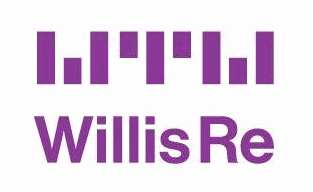Underlying profitability continued its downward trend at H1 2018, falling 3.4% for the 34 reinsurance companies tracked in the Willis Reinsurance Index, while shareholders’ equity also saw a decrease of 1.6% to $364.9 billion from $371 billion at year-end 2017.
 Willis Re’s latest Reinsurance Market Report found that the decreases occurred despite an improvement in net income of nearly 75%, or $14.5 billion, over the same period, which the report largely attributed to lower natural catastrophe losses.
Willis Re’s latest Reinsurance Market Report found that the decreases occurred despite an improvement in net income of nearly 75%, or $14.5 billion, over the same period, which the report largely attributed to lower natural catastrophe losses.
It also noted that, whilst the subset’s Return on Equity (RoE) of 8.5% remained broadly unchanged from 8.4% at H1 2017, results continued to be propped up by reserve releases, which were used by most companies in the subset, and which contributed two percentage points to RoE overall.
When normalised for a more typical catastrophe load and excluding the benefit provided by reserve releases, underlying profitability for the subset would deteriorate further to 3.4% at H1 2018, following on from 4.9% at H1 2015, 4.5% at H1 2016, and 3.7% at H1 2017.
Aggregate shareholders’ equity also fell as reinsurers continued to return capital through dividends and share buy-backs, which totalled $11.1 billion at H1 2018, as well as through unrealised investment depreciation of $8.3 billion, which was due in part to rising interest rates.
Additionally, Willis Re found that the lower level of catastrophe losses over H1 2018 supported an improved combined ratio of 94.3%, which was 0.7 percentage points lower than in H1 2017.
James Kent, Global Chief Executive Officer (CEO) at Willis Re, said: “Hopes for a hard market after the natural catastrophe losses of 2017 were not satisfied, but property cat pricing did rise overall during the first half of the year.
“Reinsurers are correcting prices when necessary and leveraging their continuously improving analytics and data. They are pricing more precisely, which is making the swings of the reinsurance pricing cycle shallower. This we believe to be the new normal.”
He continued: “Despite a small decline in conventional reinsurers’ capital, the increase in non-traditional investment in our market means that global reinsurance capital is slightly higher than at the same time last year. Many reinsurance investment funds have increased their 2018 assets under management, which limited price rises after the Harvey, Irma and Maria losses, particularly in Florida.
“Notably, we found that 11 reinsurers reported reserve releases at H1, 2018 after they lowered their 2017 catastrophe loss estimates, but six had to add to their reserves. Looking ahead, longer-term reserve releases must be reaching exhaustion, which may have a deleterious effect on future results.”


